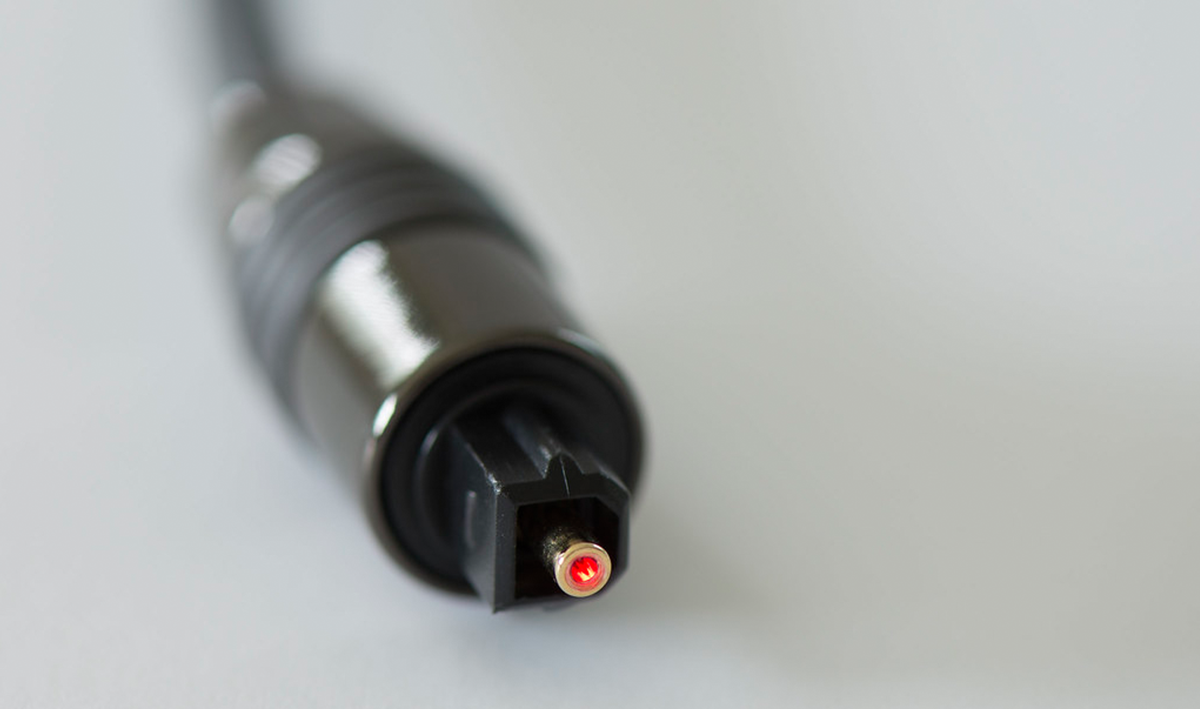All About ADAT
Nowadays, we know ADAT as the little square connector with the red light you see emitting from the back panel of your audio interface. But what is the history of ADAT, and how did it become the de-facto method of expanding your interface's channel count?
Democratic Beginnings
The ADAT (Alesis Digital Audio Tape) was an eight-track recording machine first introduced in 1992, which used consumer S-VHS (video cassette) tapes to store data. The first, rather quirky, ADAT recorders played a key role in wresting the levers of music power from major labels and commercial studios. At the time, multitrack digital recorders from Sony and Mitsubishi cost about the same price as a house, so the $3,995 eight-track ADAT democratised recording, and was the seed from which hundreds of musician-operated 'project studios' grew.

ADAT Recorders Were Dependable And Technologically Very Clever. Their Legacy Lives On Today.
The ADAT's interface played a small but critical role in this transfer of production power to a musician-led Third Estate: unlike with analogue recorders, it allowed studio owners to purchase, rent, or borrow extra ADAT recorders to add and copy tracks eight at a time. Up to 16 ADAT recorders could be linked with simple optical 'Lightpipe' cables, for a total of 128 tracks. At the time, professional DASH (Digital Audio Stationary Head) multitracks used analogue-style reels; because the ADAT used helical scan (rotating) video heads, the digital synchronisation between machines connected via DB-9 links could be sample accurate.
The Name That Stuck
That little red Lightpipe (officially called the ADAT Optical Interface) can carry eight channels of uncompressed 24-bit digital audio at 48kHz (48,000 samples per second) in one direction. All Lightpipe signals transmit at 24-bit resolution, no matter the source bit-depth; information is contained within the Most Significant Bits (MSB). If a 16-bit signal is sent via Lightpipe, the first 16-bits contain audio information while the other eight are padded by zeros. The receiving device ignores information it cannot process. This clever 'backwards compatibility' meant a 20-bit signal going from a Type II ADAT to a Type I (16-bit) just ignored the bits below the sixteen MSBs. Higher sample rates than 48kHz can be accommodated by reducing the channel-count. The ADAT protocol was first modified using 'bit-splitting' by computer PCI card-maker Sonorus. Known as S/MUX (short for Sample Multiplexing), this connection allows four channels at up to 96kHz or two channels at up to 192kHz.

Today, ADAT Is Used To Refer To The Multi-Channel Transfer Protocol That Lets You Expand Your Audio Interface's I/O Using External Equipment. The Lightpipe Carries The Data
Alesis used the TOSLINK standard optical fiber cable — an even older digital standard invented in 1983 by Toshiba (TOShiba-LINK). This cable, featuring rectangular EIAJ/JEITA RC-5720 connectors – otherwise known as the 'little plasticky thing connecting my home theatre subwoofer' – can be purchased from most hi-fi shops.
Today's ADAT
The original ADAT ethos of expanding your recording system as needed is carried forward to today – long after the recorder's obsolescence – by its humble connector. The audio interface you purchased may only be equipped with two or four mic preamps, but you can easily add extra mic inputs with an external preamp – for example the Clarett OctoPre or ISA 828 MkII – digitally connected via optical ADAT outputs.
In order to pass audio without clicks and pops, the interface and external preamp will need to be synchronised. As well as conveying digital audio, an optical ADAT signal contains its own embedded clock. The simplest way of syncing the devices is to set the sync source of the interface to ADAT, meaning the interface receives its digital clock from the external preamp via the ADAT input. This can be set in the Focusrite Control software, and LEDs on the front panel of the larger Focusrite interfaces such as the Red range will indicate the clock source. The external preamp device's sync/clock source should be set to internal, in order to pass its clock to the Focusrite interface. When multiple interfaces and devices like the Clarett and Scarlett OctoPres (which have Word Clock inputs) are to be connected, they may all be synced by an external clock, connected via the BNC input.
The ADAT recorder itself may long since have been consigned to the role of doorstop or boat anchor, but its legacy lives on in the standardisation of the Lightpipe protocol.
WORDS: Nigel Jopson

